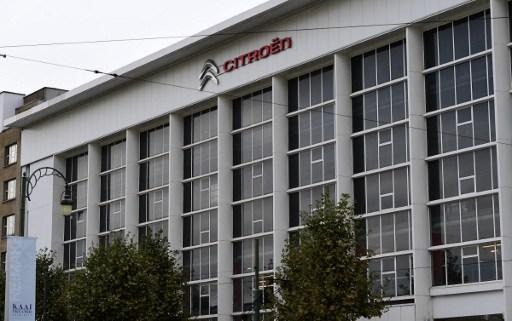On Monday evening, the Brussels and Berlin authorities inaugurated in the Tempelhof Airport building in the German capital, a Brussels contemporary art exhibition, highlighting artists of multiple origin. This reflects the Belgian capital with a population of 183 nationalities. The organisation of this event by the Brussels region is part of the promotion of opening, by the beginning of the next decade, a contemporary art museum (with international cultural status) on the site of the Citroën Yser premises in Brussels. The French car manufacturer is currently in the process of leaving the site.
In keeping with the Brussels exhibition in Berlin, Berlin artists will exhibit their works within a few months in Brussels. The Minister-President, Rudi Vervoort, promised this during the Berlin exhibition inauguration.
Succinctly explaining the Brussels museum project to an audience of 250 to 300 people, he mentioned that Brussels was “at the cutting edge” of “contemporary art”. It had, however, for several decades lacked an infrastructure to showcase this abundance of art, unlike other European cities.
In anticipation, the German capital region has entrusted to the Professor of History of Art at the VUB (the Flemish-speaking Free University of Brussels), Hans Maria De Wolf, the setting up of this German exhibition named "Gemischte Gefühle" (editors note: the German for “Mixed Feelings”), in the former Tempelhof Airport building in Berlin. Not having been used for aeronautical activity since 2008, the building has remained intact.
The “Gemischte Gefühle” exhibition compares the work of six young artists selected from amongst 120 candidates with that of more acknowledged peers, such as Marcel Broodthaers, James Ensor and Koen Theys. The intention is to highlight the most stimulating viewpoint of migration. There is an acknowledged feeling that the present Brussels population is the fruit of this.
Being held until November 9th, the exhibition is currently taking place in a location now having no connection with air traffic, and indeed the history of which itself stimulates mixed feelings. This is the view of the Mayor of Berlin, Michael Müller. From the beginning of the twentieth century, the former air terminal was transformed into a actual airport by the Nazi regime. At the time of the blockade of Berlin between 1948 and 1949, Tempelhof was used by the Americans and the British to transport supplies to West Berlin, despite the blockade. More recently, two popular referendums led to the implementation of the German authorities’ wish to dismantle the airport. Müller’s observation is thus somewhat justified.
The Brussels Times

